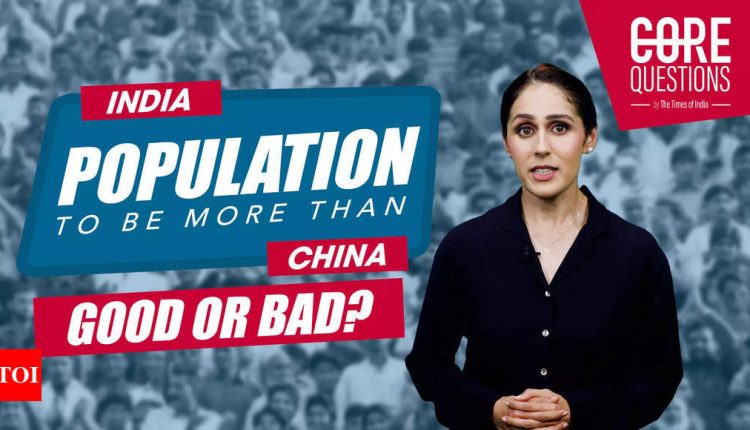While China faces challenges including a shrinking workforce with an aging population, 600 million people are aged between 18-35 in India at present. This means that India has the largest number of millennials and GenZ on the planet.
The core question: Is this an opportunity or a demographic disaster?
India’s population set to overtake that of China: Is that good or bad?
One of the biggest challenges facing young Indians is employment. The International Labour Organization (ILO) reported that the unemployment rate in India increased from 4.9% in 2018 to 7.5% in 2020, with the COVID-19 pandemic exacerbating the situation.
A majority of the unemployed are young graduates, who scrap to find decent employment and are often forced to take low-wage jobs. Such circumstances lead to social unrest, poverty and a widening rich-poor inequality gap. Good news is the Centre has taken notice and action.
PM Modi has taken several steps to boost job creation and economic growth. One such step was the establishment of the Ministry of Skill Development and Entrepreneurship, which provides funding and skill development opportunities to individuals and enterprises.
A flagship programs launched by the government to support small businesses and entrepreneurs is the Pradhan Mantri Mudra Yojana (PMMY). PMMY provides loans to small and micro-enterprises and businesses, helping them to start, expand or upgrade their businesses. Similarly, Stand Up India was launched to provide financial assistance and support to women and SC/ST entrepreneurs.
Such measures not only encourage entrepreneurship and small businesses in India but also attract foreign investment into the country. Additionally, the expansion of infrastructure and increased investment in the country has further facilitated the growth of small businesses and entrepreneurship.
Education is another major challenge in India. According to a report by the National Sample Survey Office (NSSO), only 59.5% of young Indians are literate, with disparities in the quality of education still existing in urban versus rural areas and within socioeconomic categories. This lack of skilled workers hinders the nation’s economic development.
This is getting addressed as well. There are more higher education institutions in India than ever before, with 150 new universities and over 1,570 colleges built from 2015 to 2018 and 7 more IITs and 7 more IIMs approved under the NDA government after 2014.
The Indian Government is also working on expanding existing schools, colleges and universities, improving teacher training and building more holistic curricula under the National Education Policy (NEP), which was revised in 2020 after almost three decades. NEP’s key objectives include:
- Access: Increase access to education by improving enrolment and reducing dropout rates
- Quality: enhancing teacher training and assessment, creating a more holistic curriculum, and promoting the use of technology in education
- Equity: Promoting equity in education by reducing disparities in access and outcomes, and addressing discrimination based on gender, socio-economic status, etc.
- Research: Fostering a strong research culture and promoting innovation in education
But coming back to the core question: Is India’s young population a boon or doom?
India’s youthful demographic presents a complex scenario with both positive and negative implications. On the one hand, a large youth population can bring significant economic benefits, as they represent a significant portion of the workforce and potential consumers. Furthermore, a youthful population can also drive innovation and creativity, contributing to the growth and development of a country.
Simultaneously, there are concerns about ensuring sufficient employment opportunities for such a large population and providing adequate education and training to equip them with the skills necessary for a rapidly changing global economy. Additionally, if the youth are not adequately integrated into society and do not have access to opportunities for personal and professional development, they can become a source of social and political unrest.
The answer: It is up to the government, educational institutions, and society as a whole to address the challenges and harness the potential of this demographic to establish India as a global power. This will require focused and sustained efforts to create opportunities for education, employment, and personal development, and to address the issues of poverty, inequality, and social exclusion.


